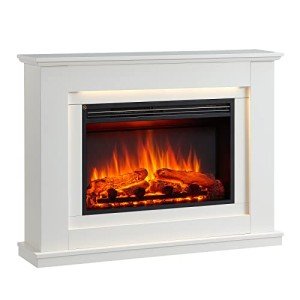15 Unexpected Facts About Fireplace That You Never Knew
The Fireplace: A Warm Embrace of Tradition and Comfort
Fireplaces have been an important part of human habitation for centuries, serving as a source of heat, a meeting place, and a sign of comfort. While the modern variations may differ incredibly from their ancient forefathers, the appeal of a fireplace sustains. This short article explores the numerous elements of fireplaces, including their history, function, types, and maintenance, while also resolving frequently asked concerns.
The Evolution of Fireplaces
Fireplaces go back to prehistoric times when open flames were utilized for cooking, heating, and security from wildlife. Over the centuries, fireplaces progressed from easy fire pits to the advanced performances we see today. Here is a brief timeline of their evolution:
- Prehistoric Era: Cavemen used open flames for heat and cooking. Wind and smoke often blew into homes.
- Middle Ages: Stone and brick fireplaces ended up being common in homes and castles, integrating chimneys to carry smoke outside.
- Renaissance: Elaborately developed mantels emerged, and fireplaces became centers of social interaction.
- Industrial Revolution: Innovations in heating materials caused a range of designs and functionalities.
- Modern Era: The arrival of natural gas, electric, and bioethanol fireplaces supplied cleaner alternatives to traditional wood-burning systems.
Table 1: The Evolution of Fireplaces
Period
Attributes
Ancient Era
Open flames for warmth and cooking
Middle Ages
Stone and brick structures with early chimneys
Renaissance
Ornate mantels, social centers
Industrial Revolution
Diverse styles, arrival of new products
Modern Era
Gas, electric, and bioethanol alternatives
The Purpose of a Fireplace
Fireplaces serve dual purposes: they provide physical warmth and develop an emotional environment. House owners often collect around the fireplace to bond, share stories, and enjoy a cozy setting. The radiance of a fire can be calming, contributing to a sense of relaxation and intimacy. Beyond individual pleasure, fireplaces likewise use functional benefits, including:
- Home Heating: Effective heat source, especially in cooler climates.
- Increased Home Value: A properly designed fireplace can enhance the aesthetic worth of a home.
- Emergency situation Heating: In case of power failures, wood-burning fireplaces can serve as an essential heat source.
- Visual Appeal: A centerpiece that adds to interior decor.
Types of Fireplaces
Today, fireplaces can be found in different styles and fuel types, accommodating a varied series of choices and settings. Here are some typical types:
Wood-Burning Fireplaces:
- Traditional fire pits
- Classic masonry fireplaces
- Require considerable upkeep and chimney maintenance
Gas Fireplaces:
- Available in both direct vent and ventless varieties
- Much easier to use and keep than wood-burning fireplaces
- Supply instant heat with a flick of a switch
Electric Fireplaces:
- Offer associated heat sources without genuine flames
- Typically created to mimic traditional fireplaces
- Ideal for smaller sized spaces and homes without a chimney
Bioethanol Fireplaces:
- Use bioethanol fuel, offering a sustainable option
- Need no ventilation and can be placed anywhere
- Safe and easy to preserve
Table 2: Types of Fireplaces
Type
Fuel Source
Functions
Upkeep Requirements
Wood-Burning
Wood
High ambiance, heat source
Regular chimney cleaning
Gas
Gas or propane
Immediate heat
Very little, periodic servicing
Electric
Electrical power
Easy setup
Really low upkeep
Bioethanol
Bioethanol fuel
Ventless, portable
Low, primarily cleaning up
Upkeep and Safety Considerations
Owning a fireplace includes certain obligations, especially concerning its safe operation and long-term upkeep. Here are crucial maintenance suggestions and security guidelines:
Maintenance Tips:
- Annual Inspection: Always have your chimney and fireplace inspected at least as soon as a year by a qualified technician.
- Routine Cleaning: Clean out ashes and debris after each use, and make sure the flue is open before starting a fire.
- Examine for Cracks: Inspect masonry for cracks or damage to avoid structural concerns.
- Use Proper Fuel: Only usage dry, seasoned wood for wood-burning fireplaces; do not burn treated wood.
Safety Guidelines:
- Install Smoke Detectors: Ensure smoke detectors are practical, checking them regular monthly and changing batteries as required.
- Keep a Fire Extinguisher: Have one nearby, even if a fireplace is used rarely.
- Monitor Flames: Never leave a fire unattended, and guarantee children and pets are monitored around the fireplace.
Frequently Asked Questions (FAQs)
1. How can I minimize smoke from a wood-burning fireplace?
To lessen smoke, use dry, seasoned wood, and make sure that your chimney is tidy and unblocked.
2. Is view to utilize gas fireplaces throughout a gas leakage?
Never utilize a gas fireplace throughout a gas leakage. Immediately evacuate the area and contact gas services for help.
3. Can I install an electric fireplace myself?
Electric fireplaces are typically simple to set up, but it is advised to speak with experts to make sure security and compliance with regional structure codes.
4. What is the best type of fireplace for small areas?
Electric fireplaces or bioethanol models are often best for small spaces, as they do not require comprehensive ventilation or structural modifications.
Fireplaces have actually transcended their initial function of offering heat to end up being treasured components of home design and family life. They evoke memories of heat, celebrations, and togetherness while supplying functional benefits that boost modern living. By comprehending visit this website of fireplaces, their upkeep, and safety practices, homeowners can take pleasure in the classic appeal of this beloved feature for generations to come.
